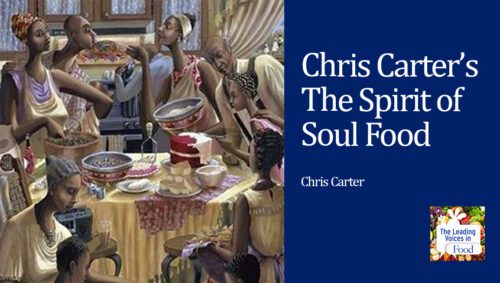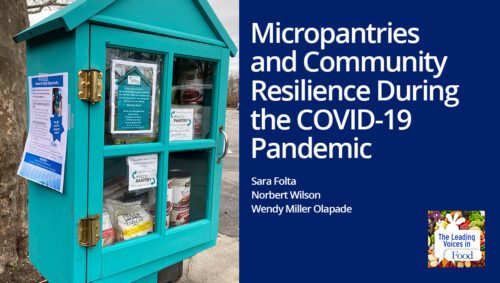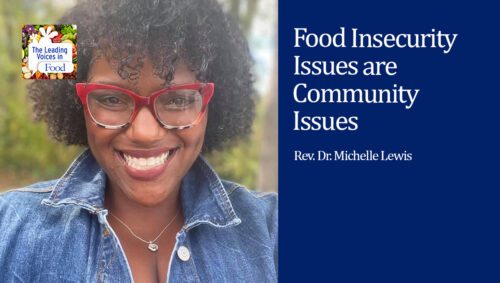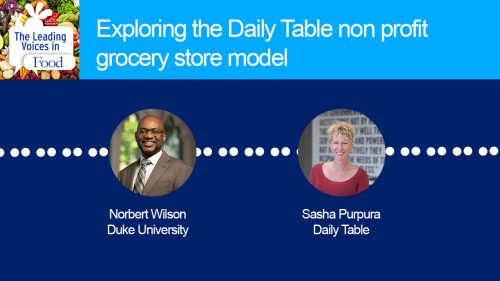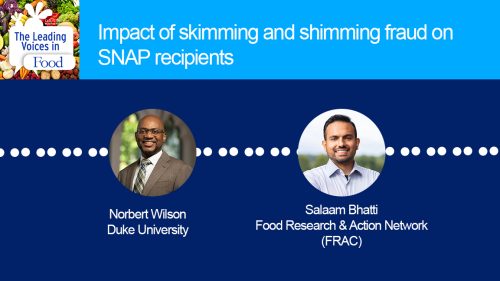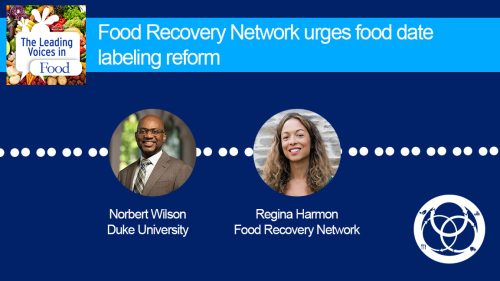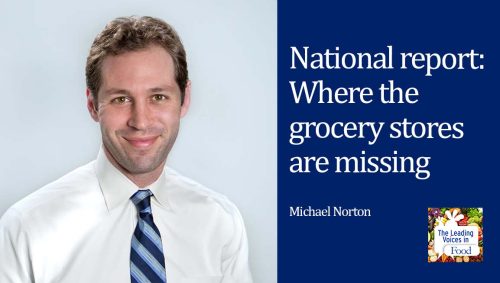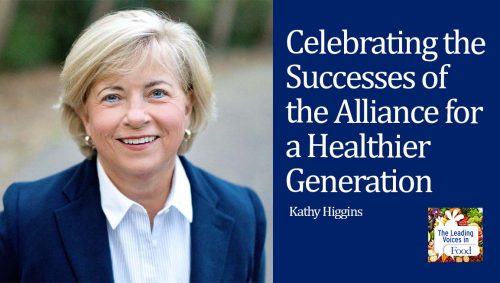The Leading Voices in Food
E96: The Role & Promise of Rural Faith Communities in Solving Hunger
Food insecurity in children is a tragic issue around the world and in the US. In America, the issue is especially challenging in rural areas. Rural faith communities often play a central role in addressing rural child hunger, and the support needs and desires of these organizations are nuanced by their faith tradition. This is the subject of a report done jointly by the Duke World Food Policy Center and the No Kid Hungry program of Share Our Strength. It is entitled, Rural Child Hunger and Faith Community Engagement. Joining us today are three experts on this issue. Emma Lietz Bilecky, the chief author of this report, received her graduate training at Duke University and is now Research Fellow with Princeton Theological Seminary’s Farminary project. Norman Wirzba and Robb Webb are some of the nation’s leading thinkers on issues of food and faith. Norman Wirzba a faculty member of the Duke Divinity School and has written some of the most influential texts on food and faith, and Robb Webb is Director of the Rural Church Division of The Duke Endowment and Chair of the Rural Life Committee of the North Carolina Council of Churches.
Subscribe: Apple Podcasts | TuneIN | YouTube Music | SoundCloud | PocketCasts | Radio Public
Tags: Faith & Food | Food Insecurity | Philanthropy & Food Systems |
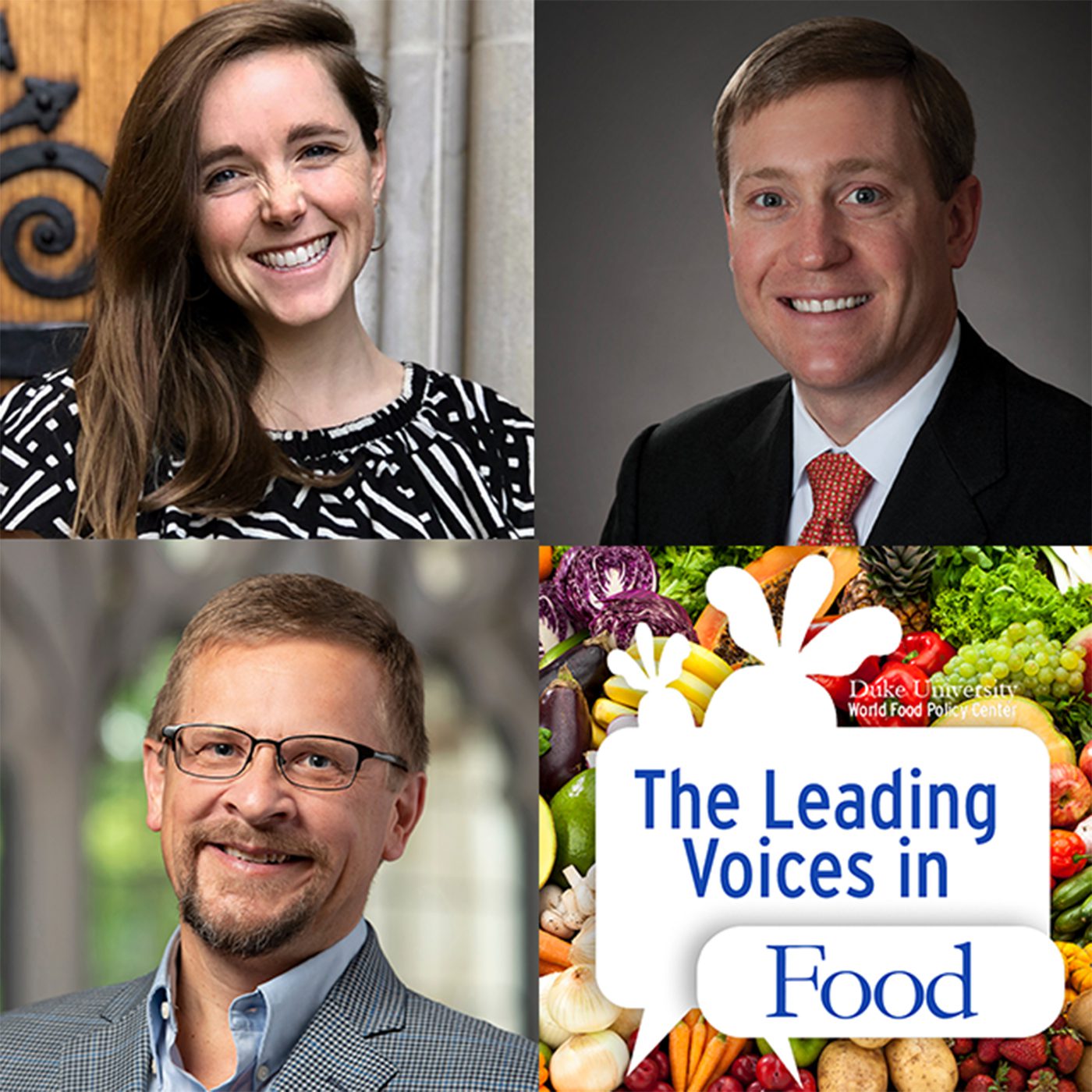
Emma Lietz-Bilecky earned joint degrees in Theological Studies and Environmental Economics and Policy at Duke University. Her academic work focused on the social and political dimensions of food systems and food environments, asking how food and the processes of its production constructs landscapes, communities, identities and place. With the World Food Policy Center, she contributes work bridging academic scholarship with communities of practice, informed by a passion for food justice and agrarian ethics.
Norman Wirzba pursues research and teaching interests at the intersections of theology, philosophy, ecology, and agrarian and environmental studies at the Duke University Divinity School. He lectures frequently in Canada, the United States, and Europe. In particular, his research is centered on a recovery of the doctrine of creation and a restatement of humanity in terms of its creaturely life. Wirzba serves as general editor for the book series Culture of the Land: A Series in the New Agrarianism, published by the University Press of Kentucky, and is co-founder and executive committee member of the Society for Continental Philosophy and Theology.
Robert R. “Robb” Webb III of Charlotte, N.C. is the director of the Rural Church Division of The Duke Endowment. A native of Charlotte and a graduate of Davidson College and Duke Divinity School, he joined the Endowment in 2006 as a program officer after serving as a management consultant for PricewaterhouseCoopers and Healthcare Resource Associates. Robb chairs the Rural Life Committee of the North Carolina Council of Churches and he is the vice chair of the Western North Carolina Conference of the United Methodist Church’s Council on Campus Ministry.
Interview Summary
Emma, let’s jump right in and I’ll ask you if you might provide a quick overview of the report. Let’s take it as a given that rural child hunger is a very important problem and that faith institutions hold considerable promise in this context. What are some of the things you found in your research that might be especially promising?
Thank you, Kelly. Rural child hunger is obviously a really big problem, but it’s a problem that’s bigger than just access to food. There’s a spiritual and a moral dimension to hunger that many religious traditions understand and can speak to. And when we’re speaking about rural child hunger, we also need to pay attention to the context in which it exists within families, within communities and within rural food environments. This is often the motivation for the work of faith communities on this issue. Hunger also points to and encompasses bigger issues and systems which perpetuate inequality and injustice. Religious language can help us see this more clearly. The second overarching theme in the report is this movement from charity to justice. And this has a lot to do with the histories of food aid involving religious communities. It’s so far haven’t solved underlying problems. That doesn’t mean that it’s not important, but we’re thinking about root causes. A lot of the experts we interviewed for this report spoke to that. So the report really focused on and identified justice-centered solutions, which tend to be community-led and defined. The report also talks about mindsets of scarcity versus abundance, which come to bear on this work. So just solutions really recognize abundance. They recognize the human, spiritual and shared resources that communities have already and are distinct from approaches that start by identifying what rural communities lack. And this relates to the final theme of the report, which is all about context and contextual analysis. Just solutions to rural child hunger are really contextually specific, meaning they might not look the same everywhere and they take into account a community’s history, assets and unique challenges. This one can be difficult when anti-hunger efforts prioritize big impact and scaling up. But again, why it’s important that just solutions be led by rural stakeholders.
Thanks for that overview. Robb, you’ve done such extensive work in faith communities and rural areas. Why are faith community so important in rural America, and how does food insecurity fit in here?
Kelly, thank you for the question and for this time. I also just want to give a plug for Emma’s report, which I think is terrific. And she hit on a number of the reasons that I might use to answer this question. I think in rural communities, churches are anchor institutions. They are the place that remains. One thing I like to point out, at least in rural North Carolina is we’ve had school consolidation. And so in many communities, the school might not necessarily be local. We’ve had work consolidation where the meals may have left. Even those that farm may have to have a second job in order to make things happen. What’s remained, and what’s been at the center of the community, has been the church. And the church has a number of assets, many of them are picked up in the report. I want to emphasize resilience. I think rural communities, rural people in rural churches are incredibly resilient and creative, and that’s an important asset. They also have a tremendous amount of available land. Buildings that can be put to use, kitchens and a volunteer-base that has local knowledge, energy, and is solution-oriented. I think what you have in churches is this unbelievable ability to mobilize, to address the deepest challenges and communities and rural child hunger is certainly among those.
Robb, thanks for that. Let me ask you one follow-up question. Given that you’re in the world of philanthropy, what role do you see philanthropy’s playing in this area and how can they be more active?
Our traditional role is as grant makers, and I think we have an expanded role. One, I think as conveners, we can take the good examples that are in this report and creative programs that are happening across the country and make those more well-known with the groups that we typically work with. We can convene and lift up projects. I also think we can think about the way in which we invest our money so that we’re investing in ways that help families advance. So what I think philanthropy needs to do is ask the question, why are people hungry problem is bigger than access to food? I think we have a role in the way that we invest, in the way that we give and the way that we convene that can help begin to address challenges in rural child nutrition.
So Norman, one can think of faith communities as places where services and aid can be delivered, but you’ve written extensively that food and faith are connected in theological and spiritual ways. Can you explain?
Sure. I think what’s really important to understand is that we’re living in a fairly new time in the history of the world where food appears for many people as a commodity. And so the most important concern is whether we can get it as cheaply and conveniently as possible. And that’s done a lot of good in the sense that it has provided a lot of calories, but I think it’s also left people with an impoverished understanding of what food actually is. Because when you think about food from the perspective of some of the world’s great religious traditions, or even the spiritual traditions of indigenous peoples, food registers primarily as a gift rather than as a commodity. And when you start to think about food as a gift, that opens up different ways for thinking about how we’re going to grow food, how we’re going to process and distribute food, but also how we’re going to consume food. And so for me, one of the really important things is to engage some of these faith traditions or these traditional indigenous cultures to see what difference would it make if we thought about land, not simply in terms of how much yield we can derive from it, but also think about land from the perspective of how do we participate in this sense that food exists for the nurturing of people’s lives. It exists for the purposes of building community. It exists for the purpose of helping people understand more deeply their place in a world with a bewildering array of creatures, whether those are plant or animal creatures, but also then how these faith traditions can be the places where by people can be inspired to think about growing food in different ways, but also sharing and distributing that food.
You’ve written about this in very powerful ways. Are there signs that thinking more about food and food systems is happening on the ground in faith communities?
I think so. And one of the reasons I think that is when I first started working on these kinds of themes, there would be a handful of people that I would consider allies or even people who took much interest in it. And what I have seen is that the interest has simply exploded. There’s now a proliferation of books about this. There’s a proliferation of leaders now in different faith organizations, institutions who are understanding that food ministries and by food ministry I mean something much more than simply a pantry or a soup kitchen, but actually getting people involved in food production, trying to form connections between institutions and producers, right? They’re understanding something about how food and the way we eat can be a profound witness to what we value in life. And so rather than just being something like a boutique side item in the life of a faith tradition, food can actually become something much more central, perhaps even indispensable in certain contexts for living out what the values are of that faith tradition.
Norman, if you look at different religious traditions, which of course have profound differences in the way some things are viewed, are there common themes that weave through these traditions with respect to food and land?
Yes, I think that’s certainly the case. And I think one of the general ways that we might describe it is to say that food is not simply a mundane reality. There’s something sacred about it. And this is not just a sort of warm and fuzzy notion of sacred because most people from a historical point of view have understood that for anybody to eat, others have to die. And that means that the gift that we call food, that we consume is a really costly and precious gift. And so to affirm something about the sacred character of life, means that we should not presume to think that food can be taken without a sincere effort to be morally in right relationship with the land and with creatures. And most basically what that has meant is that you take care of the sources of food that nurture us, right? So that means you respect the life of animals and plants. You respect the integrity of fields and watersheds, and then you also respect the eaters of this food by not producing food that’s going to make them ill. So it really becomes a way of affirming life as not just some sort of mechanical motion or eating as some sort of fueling operation, but to really think about eating and food production as ways of helping us understand life in a much richer, more profound, what I would call sacred sense, which is to say it’s affirmed by the divine and should be also affirmed and nurtured by us.
Emma, one of the topics I’d like to ask you about this new thinking that’s being done about the use of church-owned land. Can you explain some of what’s been done on this issue and where things are going?
Sure, Kelly, I really love this idea and this work that seems to be happening more and more in rural faith context. Moving from thinking about access to food, to thinking about access to land for food production. And it really relates to this school charity to just this theme, specifically a community’s capacity for self-determination and self-preservation, which comes out in a lot of recent work, both practical and academic. That really draws from this history of land dispossession, which has disproportionately hurt and affected communities of color and also disrupted cultural food systems like in indigenous communities. And land is the root of this inequality of this disconnection from food. A lot of people also have been saying for a while, this idea that land really is just the most important thing in determining a community’s food future and food security. It’s a bigger issue of access to the capacity of a food production, as well as economic, social and ecological health and resilience. So one example I can look up is that the Black Church Food Security Network, which is engaged in these kinds of asset-based community development projects. And while they’ve been working primarily in urban spaces, they’re also starting to work more rural and thinking about church-owned land or food production, but also for reparations.
So Robb let’s have you weigh in on this. I know that when we talk about church-owned land, there’s the physical property the church happens to be on, but it’s a bigger picture than that isn’t it?
Yes, it can be. And the audit that I mentioned, what we found is that a number of people have donated land to a church or a church has purchased property. For example, in the half of North Carolina, from Greensboro to the Tennessee border, there are about 7,500 available acres just in the United Methodist Church. And that’s from accumulation of parcels that have been donated, requested across time, or that that church has bought up. That then presents an incredible opportunity to begin to ask questions about what would it look like for first-time farmers or early farmers to give them a way in which to start their work. One of the ways that we’ve been thinking about this is… And this is a question, so I don’t have an example, but the question is, Could you create a supply chain for a business that was food-oriented in a rural place? For example, the central kitchen model, which comes out of the Child and Adult Care Nutrition Program offers some reimbursement for low-income children when they’re in a licensed childcare setting. Well, what if you could take a commercial kitchen in a church and build out along with all of this available land, a whole supply network. So you’re putting people to work. You’re creating some economic opportunities and you’re preparing food that’s fresh, local, nutrient-rich. I think that’s the kind of creative thinking that we’re looking for in churches. And that available land is out there, but it does require taking the time to do the audit. I think that’s a challenge, but it’s another way in which philanthropy can help churches begin to think about what they have, specifically that would be at the denominational level. So at the adjudicatory level. We’ve done it with Methodists. Others might want to look at other denominations to see what holdings are available.
So I’d like to ask each of you, what do you think are exciting and important developments around rural hunger and faith communities? Norman, let’s begin with you.
Norman Wirzba: I think one of the very exciting things is that we’re seeing a number of people first of all, who are coming into rural communities. I know that in many parts of the country and there will be regional variations we know that there’s been an exodus of people out of rural communities moving towards urban. But we’re also seeing that some places, people are moving back into rural communities and they’re wanting to invest in communities. And the way they’re doing that is often going to be through a rehabilitation of a local food economy. And it takes a variety of forms, right? On the one hand, it might be that you’ve got a proliferation of CSA’s in the area and congregations are partnering with these farmers directly to not just provide food for congregations or for families, but it’s also becoming a way then of connecting people to the sources of their food, by connecting them to the farmers. Sometimes people in these congregations will go work with the farmers. Or sometimes it’ll take the form of more niche kinds of ventures. I’m thinking here about the form of a local brewery, local cideries, right? These become ways that local efforts around food often supported by faith, traditions or faith communities become ways to rebuild something like a community center. A sense that what you really have is not just a conglomeration of people living in their disparate houses, but are actually trying to come together and create a sense of fellow feeling. Because, as my students will often say is after they’ve been thinking about food for a while, they realize that food is really an expression of fellowship, right? It’s a way of people knitting their lives into the lives of each other. And I think what we’re seeing is that communities are trying to do more of that kind of work. And that’s really exciting because that means that food and eating can be ways of community development. And this is a vastly different model than we might have thought about 10 or 20 years ago, where congregations might host a meal from time-to-time, or they might have a food pantry where they will give out food. But none of those were really about establishing relationships with many community members or just thinking about the betterment of the community as a whole. So I would say that’s one of the real exciting things that I’m seeing happening in many parts of the country now.
Robb Webb: I think one of the most exciting changes is the change in orientation, the real desire to move to justice-oriented solutions. And what I see over and over again is churches who are engaging their community, who are asking the question behind the question and then are beginning to think about how to engage. So rather than simply moving to a distribution model, they are asking how to alleviate hunger right now in the distribution model, and then change the economic situation for people long-term through the food system. And I think that long-term will have an important impact on rural child hunger and hunger in general. I’m excited to see where this is going and it’s built on a lot of good work that’s gone before.
Emma Lietz-Bilecky: I think of two things. First, I’m really excited about the ways that I see all kinds of religious communities starting to engage with their traditions differently and reinterpret them for the purposes of health and justice. One example is Adrienne Krone writes about the Shmita year, the year where land is given rest. And this isn’t a practice that Jewish communities have been practicing, but she asks could they be. So mining our traditions for these practices and these ideas that can be used in the present moment to solve the problems that are before us. And then the second thing, I really am excited about the ways that faith communities are drawing on principles of community organizing at many levels. And we talked about asset-based community development and that how churches are thinking about what resources they have available, but it’s also about what resources are available in the wider community. A faith community might not have everything it needs to solve these really complex and embedded problems, but by joining with other organizations and institutions at many levels, some really cool things can happen. And that’s what I see as pretty exciting in this work.

